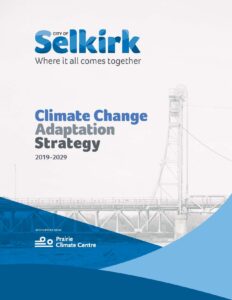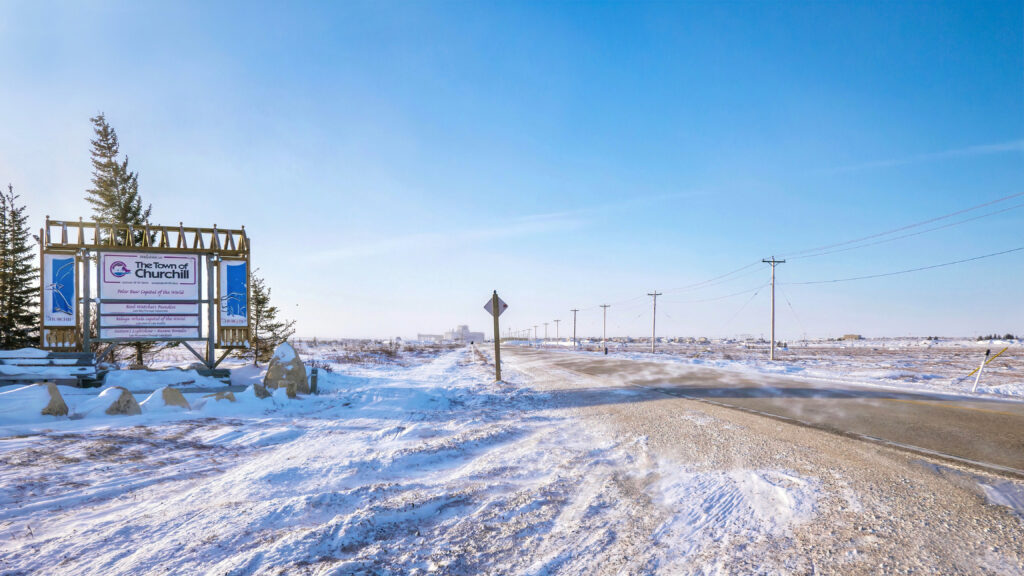23 Aug, 2022
Building Climate Resilience: Takeaways from the 2022 Manitoba Planning Conference
In June, ClimateWest hosted a session at the 2022 Manitoba Planning Conference—an annual event that brings together Manitoba’s professional planners. This year’s conference focused on the theme of recovery and resilience through a planning lens.
Our session, Building the Climate Resilience of Manitoba Municipalities, explored the progress, challenges, and strategies of Manitoba communities as they prepare for the impacts of climate change. Members of the ClimateWest team, Jo-Ellen Parry and Christey Allen, shared some of our recent work focused on municipal adaptation planning. They highlighted outcomes of a survey of Prairie communities on their preparations for climate change and a short film showcasing how urban, rural, and Indigenous communities in the Prairies are adapting to climate change.
Also joining ClimateWest for the session were Duane Nicol, Chief Administrative Officer at the City of Selkirk, and Trevor Donald, former Climate Change Coordinator with the Town of Churchill, who drew on their experiences to provide insights on effective municipal adaptation planning. Here are four key takeaways they shared.


Duane Nicol Trevor Donald
1. The creation of an adaptation plan is one way that municipalities are building the resilience of their communities.
With municipalities facing an array of shocks and stressors—including the impacts of climate change in the form of unusual extreme weather and weather-related events—many municipalities are looking for ways to reduce their risks and protect their community members and municipal services.
For instance, the Town of Churchill pursued adaptation planning to help build climate resilience after a flooding incident impaired rail line access to the community.
“Churchill chose adaptation because of the 18-month Hudson Bay railway outage in 2017,” shared Trevor Donald. “Coming out of that, they thought, ‘What is some way that we can safeguard the community?’ and of course having gone through that disruption, it was very much on people’s minds as to how to create more resilience within the community.”
As a result, the Town of Churchill undertook a process to assess the risks and vulnerabilities to infrastructure and community assets. One of the key identified impacts was the results of thawing permafrost on infrastructure. Through their adaptation planning process, the Town of Churchill came up with best practices to mitigate this risk, identifying “good drainage, better building standards, and avoiding areas that historically have had issues with permafrost” as crucial actions.

The Town of Churchill’s 2020 Climate Change Adaptation Strategy
The City of Selkirk also sees the need for adaptation and is taking a proactive approach in developing its adaptation plan. “Communities have a choice in terms of adaptation: you can adapt today, or you can adapt later, but at some point, you’re going to have to adapt,” Duane shared. “Our role from a community governance standpoint is to really prepare [for] the future and to invest and build today.”
“Communities have a choice in terms of adaptation: you can adapt today, or you can adapt later, but at some point, you’re going to have to adapt.”
-Duane Nicol, Chief Administrative Officer at the City of Selkirk
The development of an adaptation plan that is tailored to the needs of a municipality—as was undertaken in the Town of Churchill and the City of Selkirk—is one way a community can better understand their current and future climate risks and develop an action plan to reduce these impacts.
2. Considerations of climate change can and should be baked into municipal operations.
Adaptation planning needs to be mainstreamed at the municipal level so that climate risks and community resilience needs are included in planning conversations.
The City of Selkirk is taking this approach when building and maintaining municipal infrastructure. In part, this involves climate-proofing infrastructure by integrating credible and pertinent climate data throughout the planning and maintenance stages.
“If we’re going to invest millions of dollars every year into our buildings and pipes that are supposed to be in the ground for the next 50–100 years, it would be absolutely negligent if we were not considering all the things that we know about the future climate,” Duane explained.
Stressing that adaptation planning is about making decisions using the best information available, Duanne added:
“The way adaptation is presented, it’s like it’s this huge piece of new work that we’re adding to an already overfilled desk. The perception is that it’s additional or it’s new, and it’s really not. We do infrastructure planning all the time, we do community building all the time: we’re just not using the best information that’s available to us [when engaged in these processes].”
The City of Selkirk’s approach to climate adaptation—one that doesn’t see adaptation as a separate measure but instead builds it into municipal operations and decision making—demonstrates that integrating available climate information and thinking about tomorrow, today, can promote long-term safety and resilience for communities.

The City of Selkirk’s 2019–2029 Climate Change Adaptation Strategy
3. Adapting to climate change needs to be a collaborative process.
When planning for resilience, both communities felt it was important to take a collaborative approach.
The Town of Churchill brought members of the community into the adaptation planning process through their community stakeholder committee. “They vetted a lot of the information that was contained within the plan, and then we went forward to mayor and council,” shared Trevor.

Churchill, Manitoba
The City of Selkirk also adopted a collaborative model to gather employee and community perspectives. “We brought together about 20 staff members from all departments at all levels of the organization, from front line right up to senior management, including myself, and then we took a look at the impacts of climate change using the best data available to us from [the] Prairie Climate Centre on a season-by-season basis,” Duane explained. “The staff thought about those potential consequences from a service delivery lens, we went service by service, season by season, and documented, then ranked and prioritized those consequences.”
Trevor added to these comments by noting the importance of collaboration within municipalities across different areas of responsibility, as well as with other municipalities and levels of government.
By working together, it is possible to scale up action to the level needed to match the climate change challenge. Bringing together multiple viewpoints—whether they are from community members, different municipal departments, or different jurisdictions—can strengthen adaptation planning and ensure that a comprehensive and collective approach is taken.
4. Adaptation is a long-term process, and our actions today can build resilience for future generations.
It’s critical to recognize that preparing for and adapting to climate risks is a long, dynamic process. Duane emphasized that beyond the creation of an adaptation plan, building municipalities’ climate resilience will require collaboration across timescales:
“It’s important that we think about the work that we do not as a sprint, and not even as a marathon, but as a relay race. At some point we’re going to be handing the baton off to the people behind us that will be sitting in our seats in the future, and we have to think about how we set them up for success because this is going to be an ongoing process.”
Ensuring that we are setting future municipal officials up for success and taking a longer-term planning horizon is critical for effective adaptation outcomes.
Looking Forward
Hearing from municipalities like the City of Selkirk and the Town of Churchill can help raise awareness around the need for all communities to prioritize adaptation actions and highlight the importance of sharing good practices for resilience building activities.
If you would like to share the experiences of your municipality taking action to adapt to a changing climate across the Prairies, we would love to hear from you! Please reach out to us at info@climatewest.ca.
ClimateWest is also here to support municipalities at any stage of their adaptation planning journey. Central to ClimateWest’s mission of building a climate-resilient Prairie region is assisting municipalities access climate data to inform better decision making and adaptation planning. Our recent Guide to Finding Climate Information & Data can help municipalities identify the right source of climate data for their adaptation planning needs.
